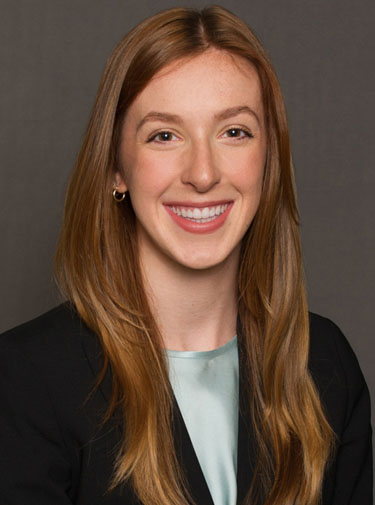
Madison George, Stage I
During my first year of medical school, we spent a week learning about cancer-causing genetic mutations. Unfortunately, this topic was something I was already intimately familiar with. My family and I have a past medical history riddled with many types of cancer. At the heart of our genetic history lies a mutation in the CDKN2A gene, which normally functions as a tumor suppressor gene. Individuals with a defective CDKN2A have a significantly higher risk of cancer, especially melanomas and pancreatic cancers.
Around the same time, I received a call from my dermatologist, Dr. H. It was 5 p.m., and Dr. H herself made the call. I held my breath until she broke the news: “Madison, we received the results of your most recent biopsy, which revealed that you have melanoma in situ in the left thigh.” This was my first cancer diagnosis. I tried my best to maintain my composure, listening to her plan to surgically remove the malignant cells, with generous margins of 5mm. I would have a very large incision on my leg. I called my mom first to tell her the news, and she was devastated. We both knew what this meant for my future: I most likely possessed the CDKN2A gene like my father. Shortly after this call, I remember driving somewhere, and that is where the tears came. I knew that my life would never be the same. Shortly after the surgery, I had my blood drawn and received a call from a genetic counselor with the formal diagnosis of the CDKN2A mutation. Meanwhile, Dr. H mandated frequent skin checks and biopsies of suspicious lesions.
Roughly a year later, I went for my latest skin check with Dr. H. At this visit, she biopsied a suspicious lesion on my right thigh. A few weeks later, I got the call, and Dr. H dropped the news: “It’s melanoma again. However, this time, it was stage 1 superficial spreading melanoma, <0.2 mm deep.” Sadly, Dr. H notified me that she was no longer comfortable removing a melanoma at this stage. Thus, I had to go to a melanoma center for this surgery. A month later, during the surgery, I told my surgeon about my passion for medicine and helping others impacted by my condition. She noted that she admired my strength and asked me if I wanted to watch the surgery in real time. As she operated, she explained each step to me. I loved it. When I left the surgery, I was physically and mentally one tumor lighter. Most likely, this will not be my last melanoma. Nonetheless, I am reassured by my medical and personal support system to catch and cure it early.
Madison George
Stage I Melanoma Survivor
Date of Diagnosis: 11/01/2021
Royal Oak, Michigan
Copyright © 2014-2022 - AIM at Melanoma Foundation. All rights reserved. Website by RED ZEPHYR DESIGN

